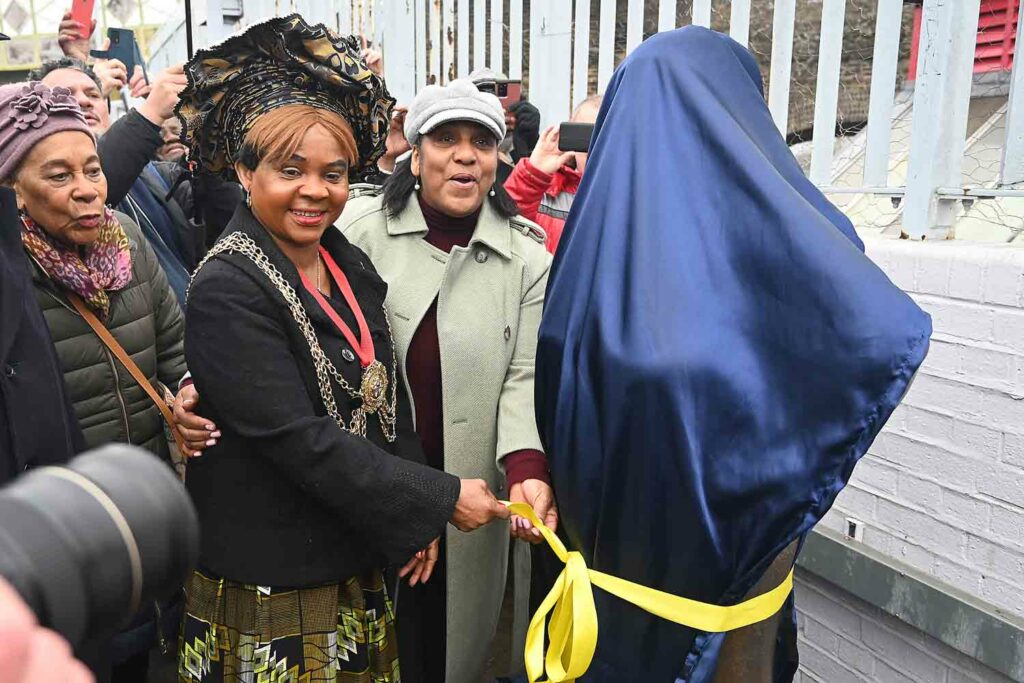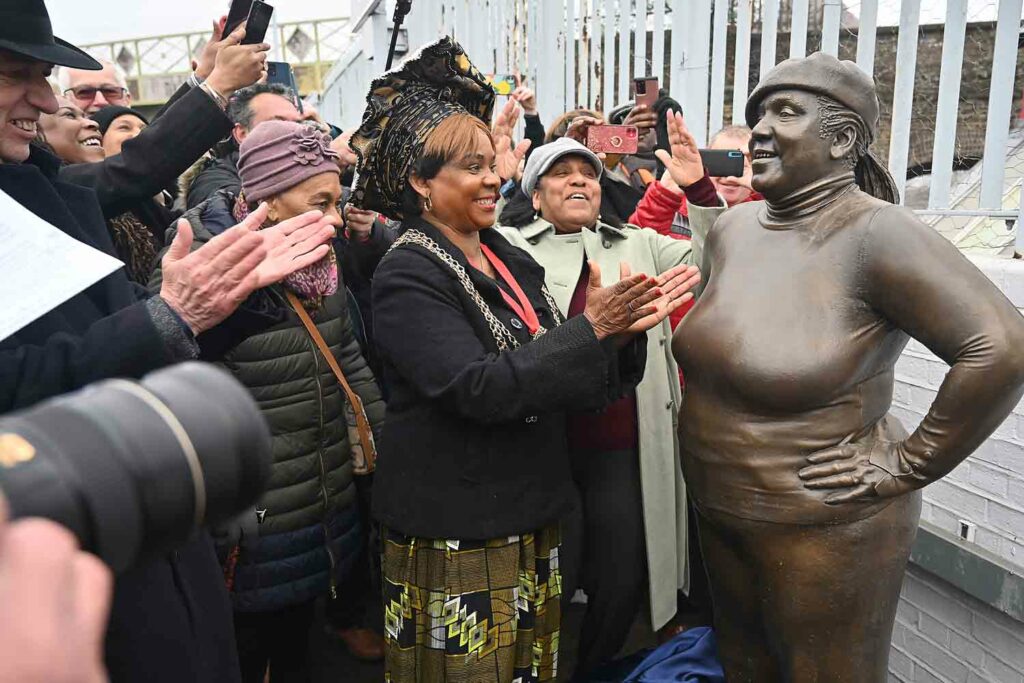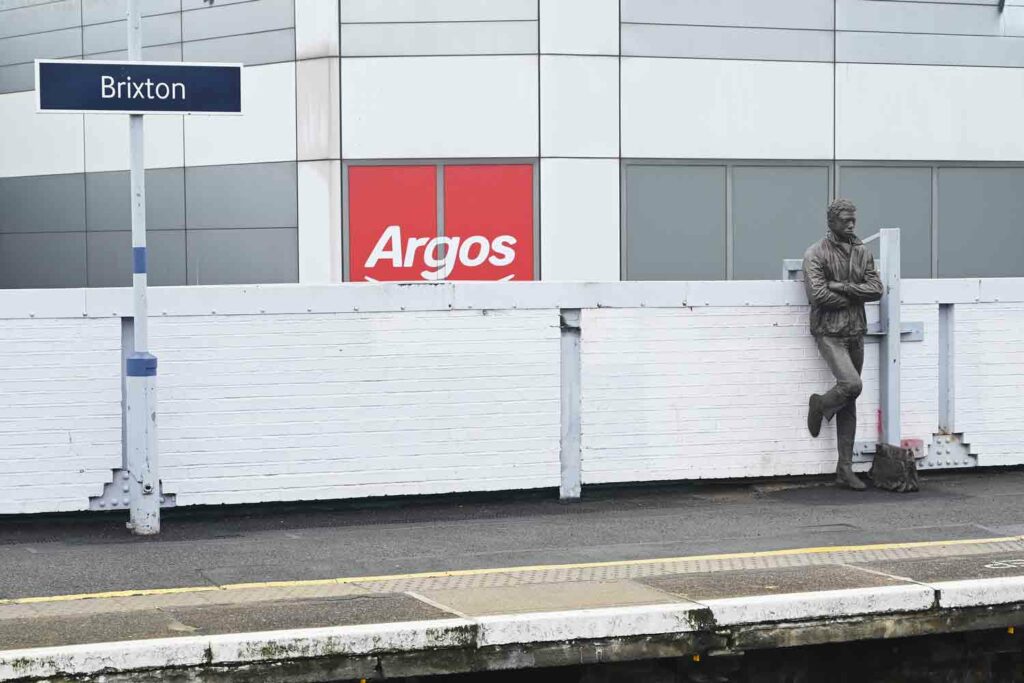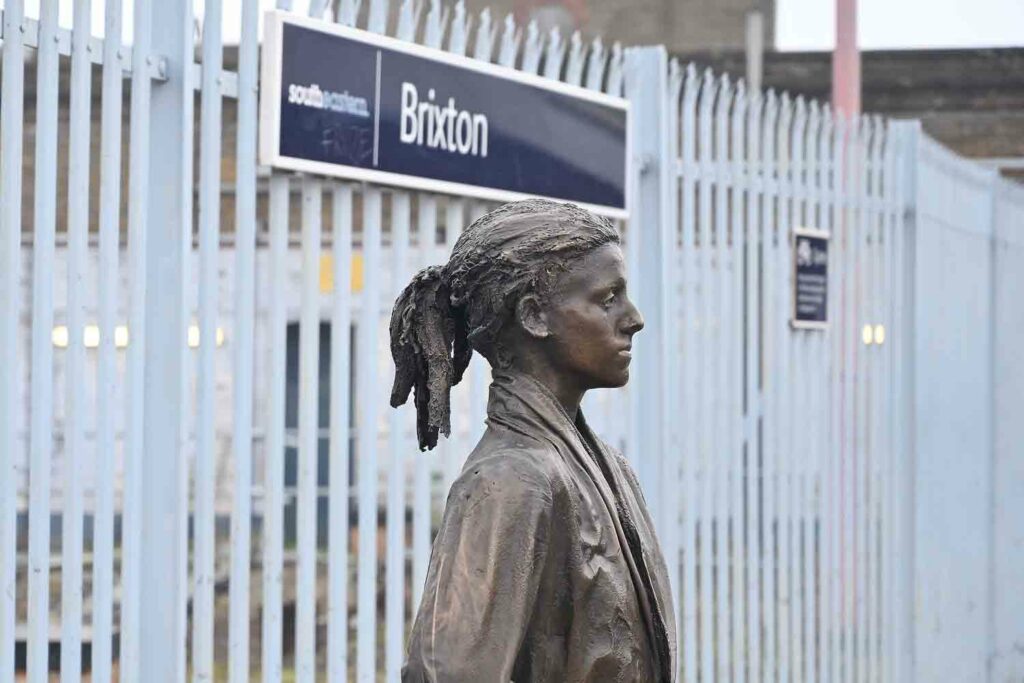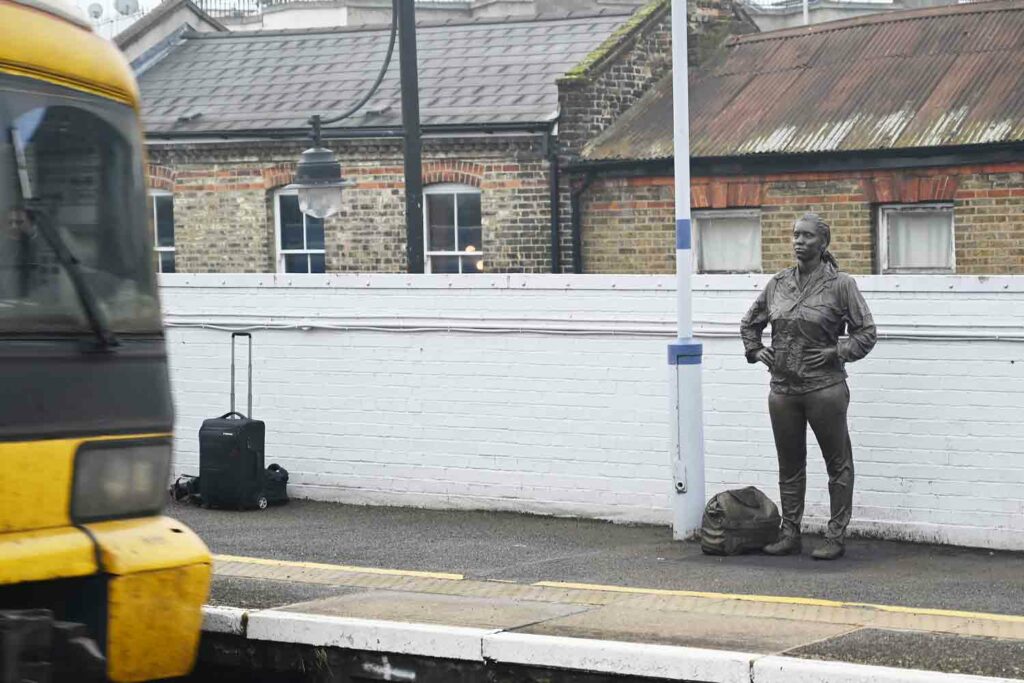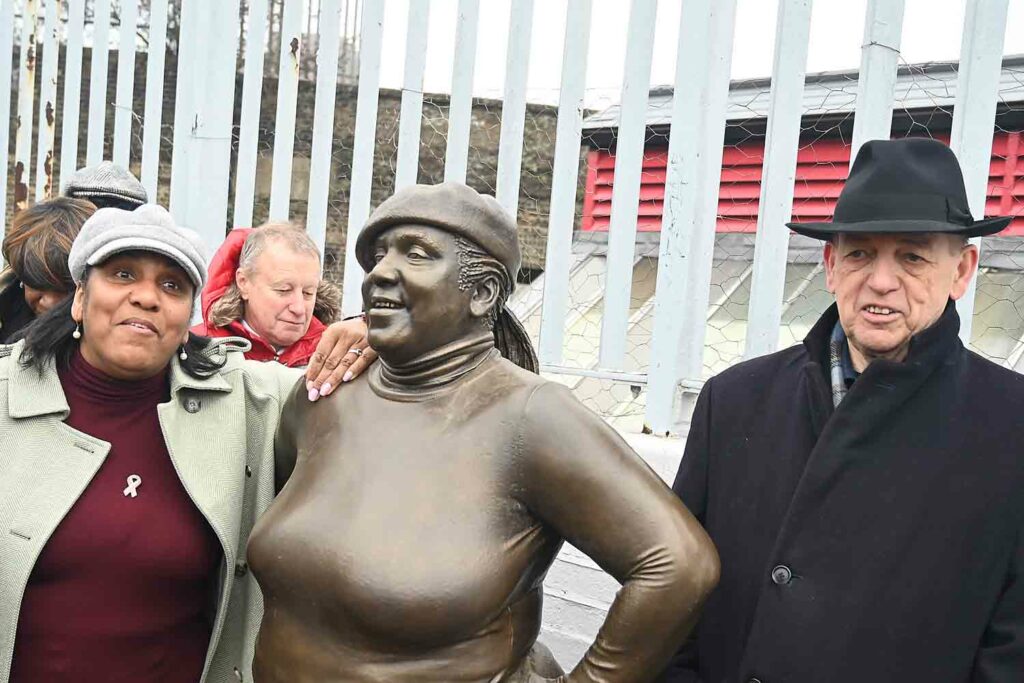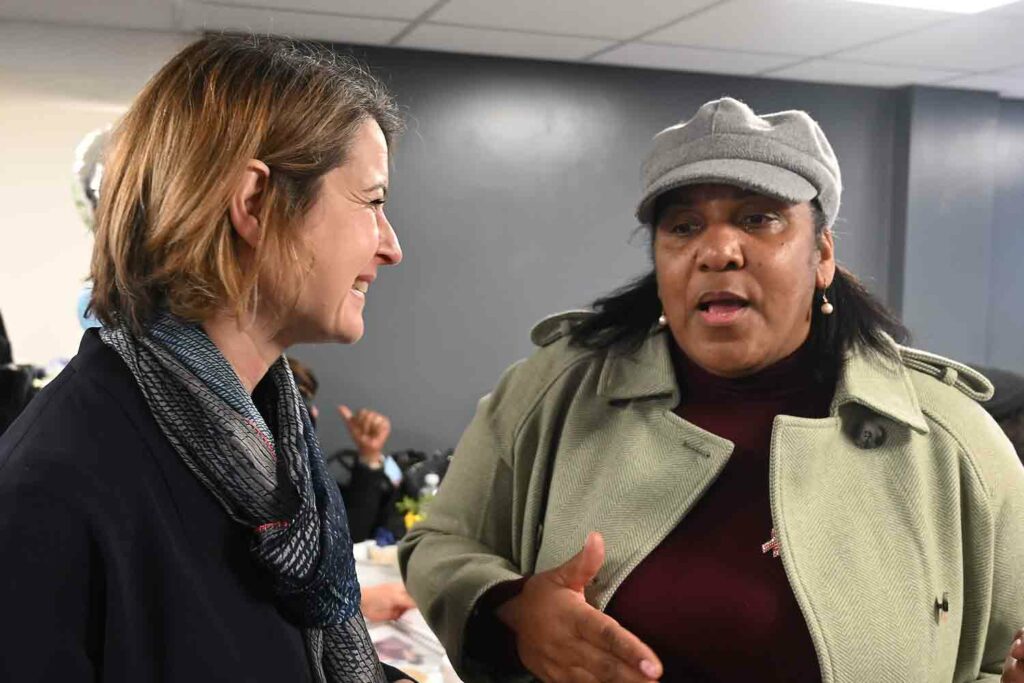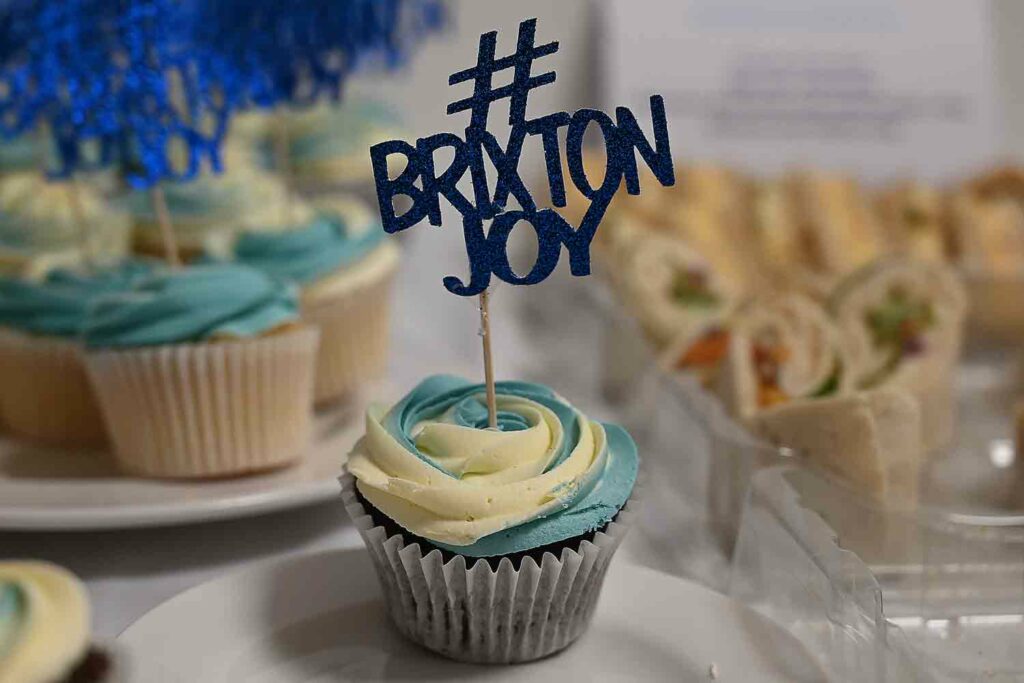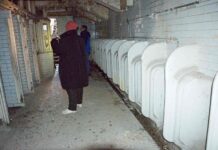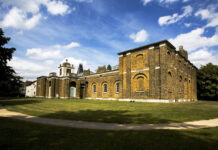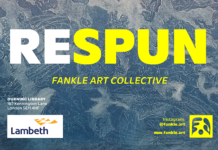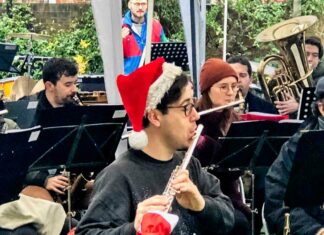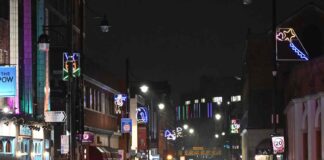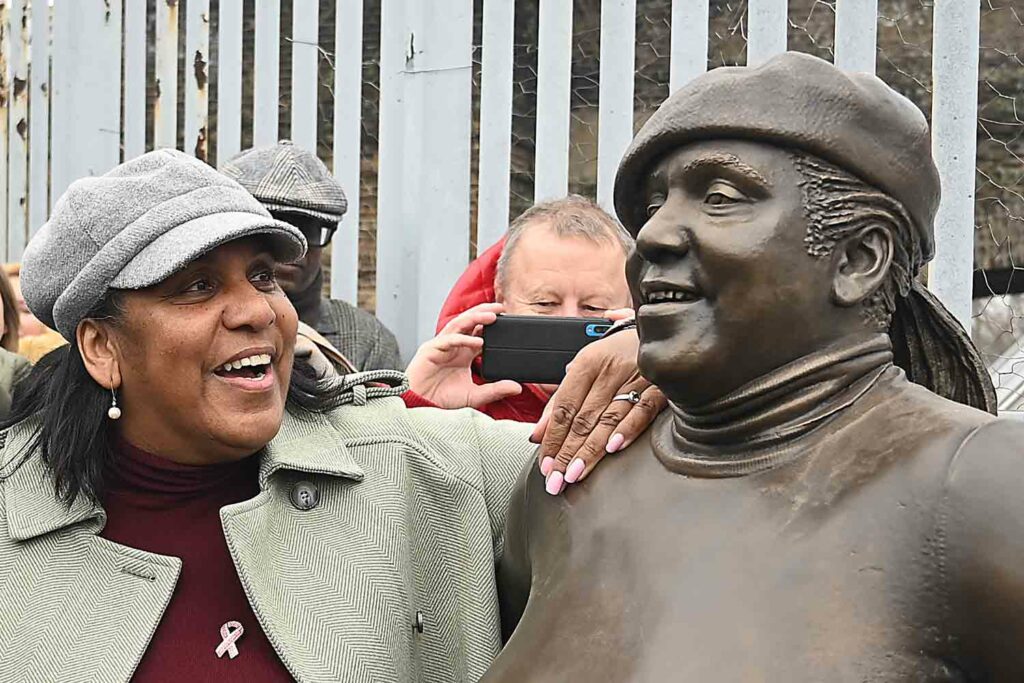
Brixton railway station’s statues, two of which are believed to be the first sculptural representations of British Black people in England in a public art context, are back in place with a new fourth statue joining them.
The three statues that made up Platforms Piece, created by sculptor Kevin Atherton, were first installed in 1986.
One of the three statues was of Brixton resident Joy Battick, who was then working at Brixton Rec which overlooks the station platform.
Now a new life-size bronze figure of Joy has been unveiled at Brixton railway station, some 35 years after Joy posed for her original statue.
The new sculpture “Joy II’” stands on the opposite platform to “Joy”, facing her 26-year-old self.
As well as the new sculpture, the three statues created in the 80s and listed by listed Grade II by Historic England in 2016 originally have been reinstated at the station after repairs and refurbishment.
The £80,000 cost was split between Southeastern railway, which now owns the figures, Network Rail and English Heritage.
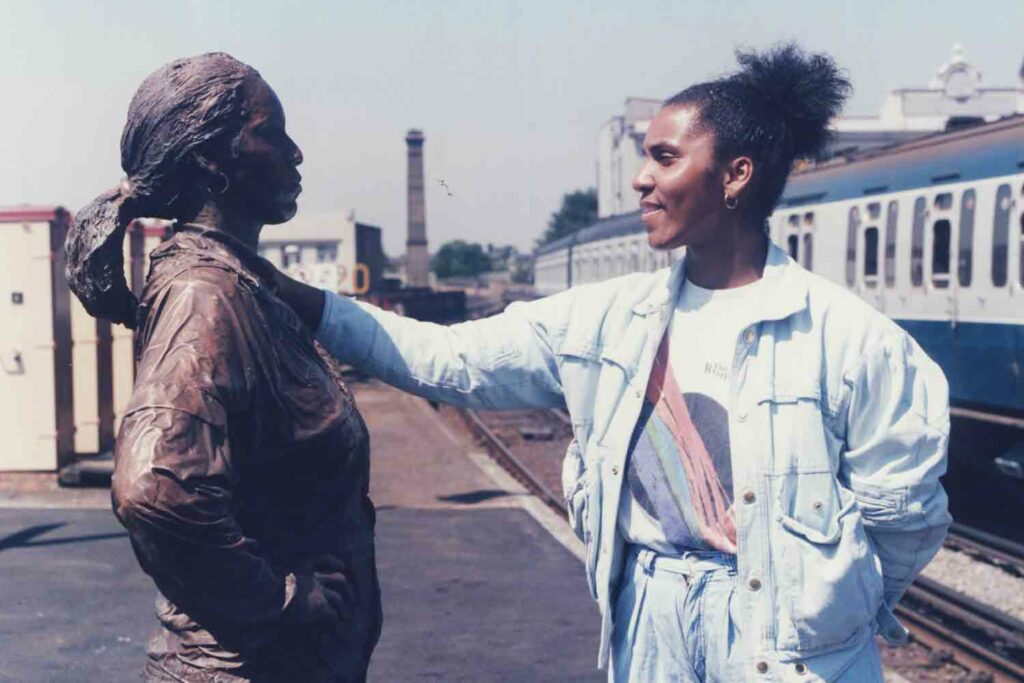
Platforms Piece was commissioned by British Rail after the Public Art Development Trust suggested a piece of art should be created as part of a £1m improvement scheme.
In 2016, it was given listed status by Historic England, as two of the figures are “believed to be the first sculptural representations of British black people in England in a public art context”.
Despite the listing, the BBC at the time left the Brixton statues off a list of statues of Black people in Britain because the subjects we “not named historical figures”.
Sculptor Kevin Atherton wanted his three figures to emphasise the passing of trains at the station through their positioning, and to represent the real inhabitants of Brixton.
He therefore chose models who had personal connections to the area: Peter Lloyd, Karin Heisterman and Joy Battick.
Both Joy Battick and Karin Heisterman, who was a student from Germany at the time, were at today’s unveiling.
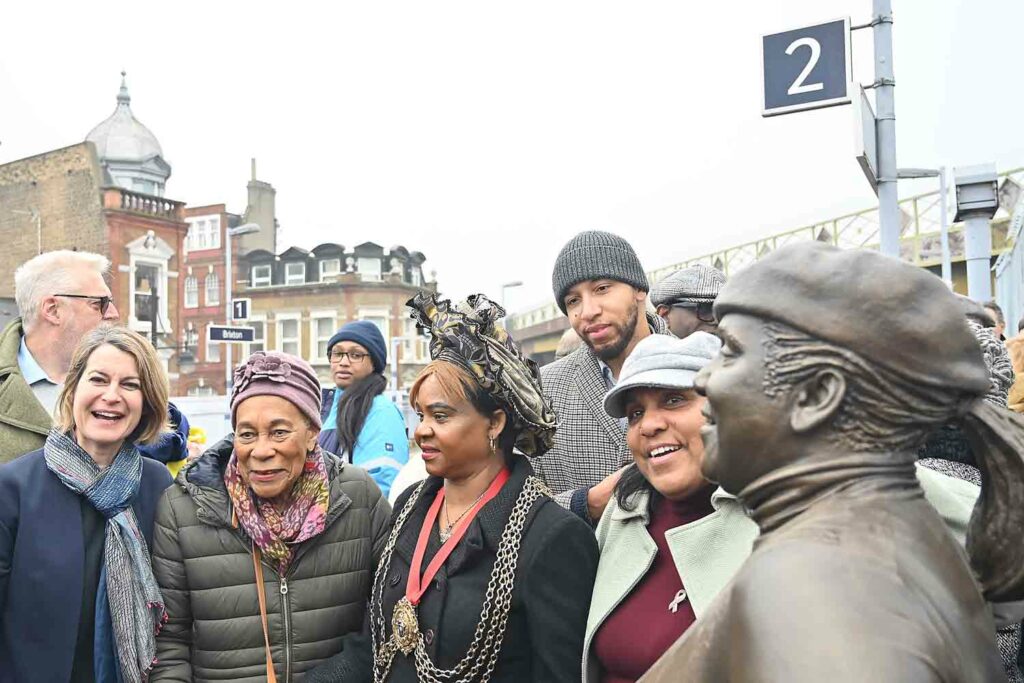
After the statues had been exposed to the elements since 1986, Southeastern removed the three original statues to be fully restored.
Together with Joy II, they make up Platforms Piece – The Return.
Joy Battick unveiled her new bronze sculpture at the station alongside Lambeth mayor Pauline George and Kevin Atherton, at a ceremony today (25 January).
Joy, who worked at Brixton Recreation Centre in 1986, said: “I don’t think many people can claim to have a life-size statue of themselves so to have two in the same place is quite amazing.
“Back in the 80s, all the staff at the centre were asked if they wanted to take part in the art project and I just thought ‘why not?’.
“I felt like a mummy being wrapped in bandages, but when I saw the end result standing on Brixton platform, I knew it had all been worth it.
“Meeting up with Kevin again to pose for the second statue felt far more relaxed. It was a much easier process as I was photographed by 460 cameras at exactly the same time – I felt like a superstar!”
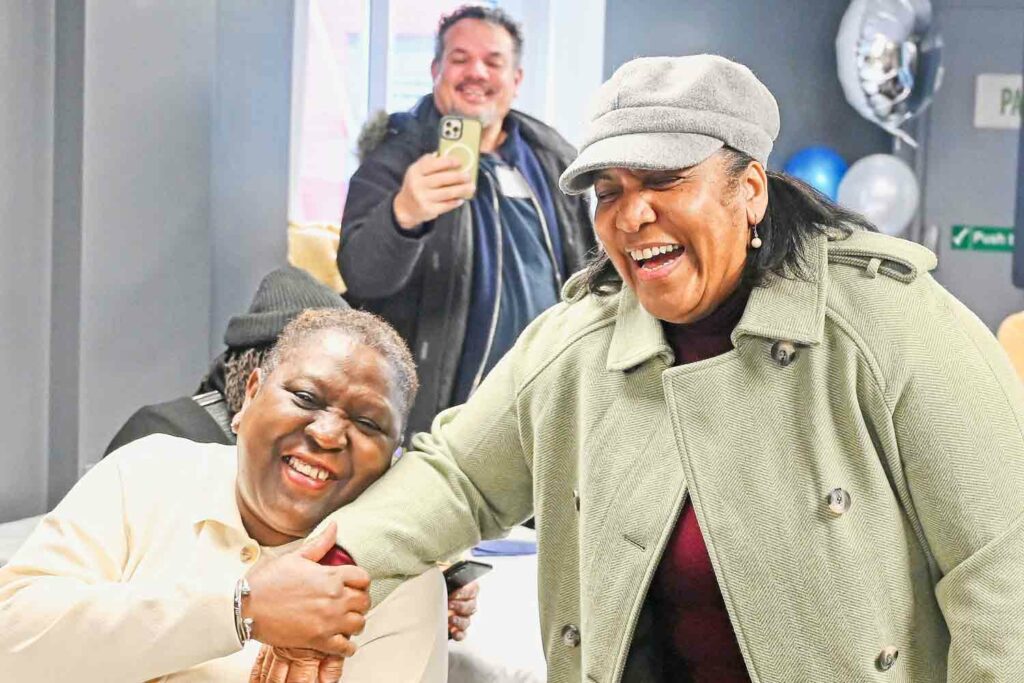
At a reception after the unveiling, Joy Battick said: “I’m overwhelmed. I’m hugely blessed for sure – that you all turned up and I was able to turn up twice.
“It’s unbelievable. I am truly grateful without a doubt for myself and for the other people that were statues.
“It’s been absolutely amazing. I would never have expected this some 36 years later.”
Local MP Helen Hayes said: “It is so lovely to see both the new statue and the previous statue looking at each other across the railway tracks.
“You look so proud in both of them,” she said to Joy Battick. And we are proud of you.
“One of the things that I work on in Parliament is the need for reform of the history curriculum in our schools.
“We have to be teaching our young people a full and a better and a richer version of our history as a country.
“We teach our children an awful lot about the Tudors, but our history is also the history of our communities and the history of struggle that our communities have had.
“The first statue was installed just five years after the uprising in Brixton – a very traumatic and tense time in the history of our communities here.
“That was an important positive statement at that time that has been with us ever since.”
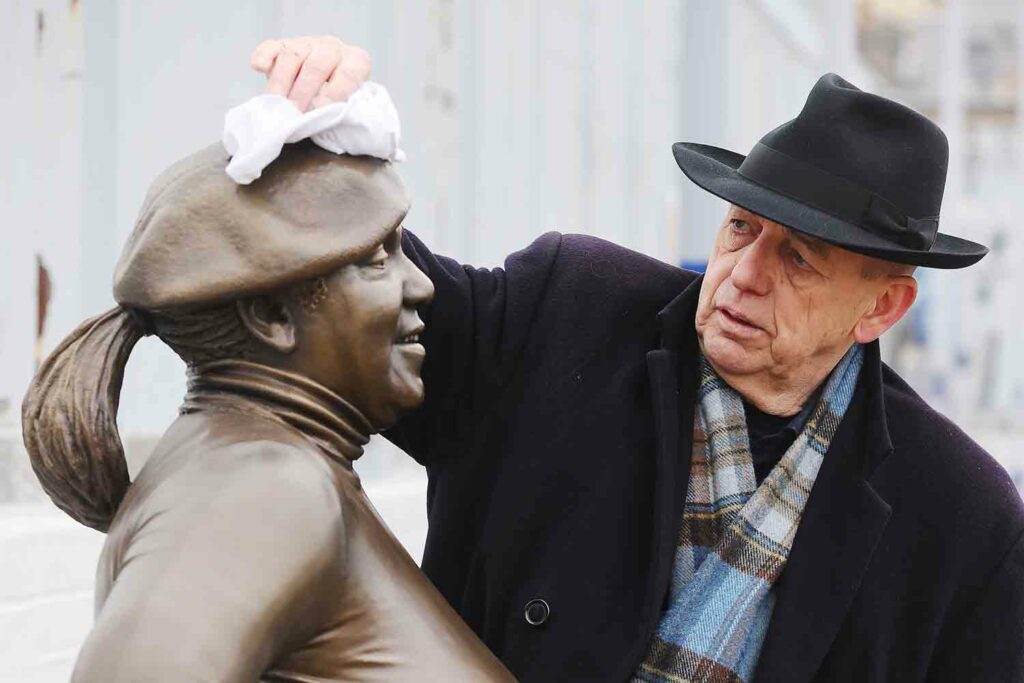
Helen Hayes said the statues told the story of Joy Battick and whole community over the decades between their creation.
“And it’s there for everybody to see on the trains and getting off the trains. And it makes us all so proud.
“This has been a bleak winter and it is nice to have a moment where we can just celebrate something that is truly positive in every aspect.”
Mayor Pauline George said the statues has made “proper history” had been made using local residents and ordinary people.
“I have to say this and I really need to say it,” she added. “For a Black woman to do this and everyone involved is kudos.”
Although the figures are hollow, they weigh approximately 200 kilos each.
The first three were created using a technique called body casting, which involves a plaster bandage, while Joy II was made using 3D scanning and 3D printing technology.
All the sculptures were cast into bronze using the “lost wax process”, an ancient technique which dates back to the very beginning of bronze casting.
Kevin Atherton said: “The original artwork became a much-loved Brixton landmark, welcoming passengers as they got on and off their train or when viewed from passing rail carriages.
“Historic England should be commended for recognising the piece as a celebration of the cultural identity of the area and I’m delighted the three original sculptures have been returned to their home.
“The methods we use to craft sculptures have changed significantly since the 80s; creating Joy II and reuniting with Joy after so many years was a wonderful experience.”
Peter Stapleton, head of facilities at Southeastern, said: “Platforms Pieceis so important to the local area and as the owners of this significant artwork, we’re very pleased to have been able to restore and return the original sculptures to the platform.
“Having a new figure at the station will hopefully encourage a whole new generation to appreciate all the sculptures.”
Peter Stapleton also thanked the Brixton Society for its help is getting permission to move statues that had already been listed.
Creating Platforms Piece – The Return was possible thanks to 3D artist Pedro Colaço, AB Fine Art Foundry, 3D scanning firm FBFX and 3D printers Hobs3D.

